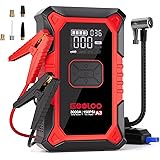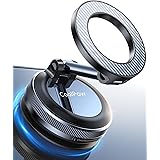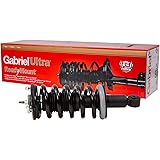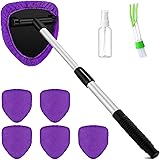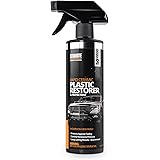Table of Contents
The car world depends a lot on transmission fluids that meet certain standards, like Dexron II. With so many cars on the road, knowing about transmission fluid variations is key to keeping cars running well.
Dexron II is a common ATF specification used by many car makers. But, the need for dexron ii equivalent fluids has grown because of different formulas and needs.
It’s very important to use the right transmission fluid. This ensures your car’s transmission works well for a long time.
Key Takeaways
- Dexron II is a widely adopted ATF specification.
- Understanding transmission fluid variations is crucial.
- Using the correct transmission fluid is vital for vehicle health.
- Dexron II equivalent fluids cater to different formulations.
- ATF specifications play a significant role in vehicle maintenance.
What is Dexron II Transmission Fluid?
Dexron II was a big step forward in automatic transmission fluids (ATFs). General Motors created it to make automatic transmissions last longer and work better in their cars.
The Origins and Development of Dexron II
Dexron II was made to fix the problems of its earlier version, Dexron. It has better heat resistance, friction, and wear protection. General Motors teamed up with fluid makers to create a new standard for their transmissions.
Key Properties and Characteristics
Dexron II keeps its lubricating power across many temperatures. It also has additives to stop corrosion, reduce wear, and boost transmission efficiency.
Original Applications and Intended Use
At first, Dexron II was for General Motors’ automatics. But, its good performance made it popular with other car makers too. It’s used in many cars, including some from Europe and Asia, because it works well.
The Evolution of Automatic Transmission Fluids
Automatic transmission fluids (ATF) have seen a lot of changes over the years. These changes have kept up with the needs of modern cars.
From Dexron to Dexron II: Historical Context
The first Dexron ATF came out in the 1960s by General Motors. It was a big step forward. Dexron II was then introduced to fix some issues with the first Dexron. It worked better with newer car transmissions.
The Role of General Motors in ATF Development
General Motors has been key in ATF development. Their standards have set the bar for the industry. Their work has pushed ATF performance to new heights.
Why Transmission Fluid Formulations Change Over Time
Transmission fluid formulas change for many reasons. These include new car tech, rules, and the need for better fuel use. Some main reasons are:
- New car tech, like electronic transmissions.
- Rules about fuel use and emissions.
- The need for better performance and protection.
Knowing these reasons helps pick the right ATF for your car.
Technical Specifications of Dexron II
Knowing the technical details of Dexron II is key for car lovers and mechanics. Its performance and how well it works with different cars depend on these specs.
Viscosity and Flow Properties
Dexron II has a special viscosity that helps transmissions run smoothly. It stays fluid in many temperatures. Its flow is important for keeping the transmission lubricated and working right.
Temperature Range and Stability
The temperature Dexron II can handle is crucial. It works well from very cold, around -40°C, to very hot, over 150°C. This is important for keeping the transmission running well and lasting long.
Additive Packages and Their Functions
The additives in Dexron II are key to its success. They include things that help prevent wear, corrosion, and sludge. These additives keep the transmission in top shape.
| Property | Specification | Benefit |
|---|---|---|
| Viscosity Index | High | Maintains fluidity across temperatures |
| Temperature Range | -40°C to 150°C | Ensures stability in extreme conditions |
| Friction Modifiers | Present | Reduces friction for smooth operation |
| Anti-wear Agents | Present | Protects against wear and tear |
In short, Dexron II’s specs are made to help automatic transmissions work their best. This includes its viscosity, temperature range, and additives.
Dexron II Equivalent: Understanding the Variations and What it is about
Exploring Dexron II equivalents means looking into the details of transmission fluid specs. “Equivalent” in this context means a product that matches or beats the Dexron II’s performance.
Definition of “Equivalent” in Transmission Fluids
In the car world, an “equivalent” transmission fluid has similar traits and performance to the original fluid. It must meet standards for viscosity, temperature stability, and friction control.
Key characteristics of equivalent transmission fluids include:
- Viscosity index and flow properties
- Temperature range and stability
- Additive packages for wear protection and friction control
Official vs. Unofficial Equivalents
The market offers both official and unofficial Dexron II equivalents. Official ones are certified by the car maker or the fluid’s creator, like General Motors for Dexron II.
Unofficial ones claim to match Dexron II specs but lack official approval. They might be cheaper, but their quality and safety are uncertain.
The Importance of Certification and Approval
Certification and approval from trusted sources, like General Motors or Ford, are key when picking a Dexron II equivalent. These confirm the fluid has passed tough tests and meets standards for performance, safety, and compatibility.
| Certification/Approval | Description | Importance |
|---|---|---|
| General Motors Certification | Meets Dexron II specifications | Ensures compatibility and performance |
| Ford Approval | Meets Mercon specifications | Validates fluid for use in Ford transmissions |
In summary, when looking for a Dexron II equivalent, always seek official certifications and approvals. This ensures the fluid meets your vehicle’s transmission needs.
Major Dexron II Equivalents in the Market
Knowing about Dexron II equivalents is key for car care. It makes sure you use the right transmission fluid. This boosts your car’s performance and life span.
OEM Equivalents from Different Manufacturers
Many original equipment manufacturers (OEMs) make Dexron II equivalents. These include:
- General Motors’ own Dexron II specification fluids
- Other makers like Mobil, Castrol, and Valvoline, who meet Dexron II standards
Aftermarket Alternatives and Their Reliability
There are also aftermarket options. But, their trustworthiness depends on the maker’s reputation and Dexron II compliance.
International Variations and Regional Differences
Regional differences affect Dexron II equivalents’ availability and formula. For example:
| Region | Common Brands | Notable Specifications |
|---|---|---|
| North America | Mobil, Castrol | Meets or exceeds Dexron II specs |
| Europe | BP, Shell | Compliant with Dexron II and local ATF standards |
| Asia | Idemitsu, ENEOS | Formulated to meet Dexron II and Japanese ATF standards |
This table shows the variety of Dexron II equivalents worldwide. It stresses the importance of picking a fluid that fits your car’s maker’s specs.
Reading and Understanding ATF Specifications on Labels
ATF labels are more than just rules. They are the key to your transmission’s best performance. It’s important to know what they say about your vehicle’s transmission fluid.
Decoding Manufacturer Specifications
Manufacturer specs on ATF labels tell you a lot about the fluid. They show viscosity, temperature range, and more. These details help you know if the fluid is right for your car.
Key elements to look for:
- Viscosity grade
- Temperature range
- Performance standards met (e.g., Dexron II, Mercon)
Understanding Approval Codes and Certifications
Approval codes and certifications on ATF labels mean the product meets certain standards. These codes might seem hard to understand. But knowing them is key to making sure the fluid works well with your car.
Common approval codes include:
- Dexron II
- Mercon
- Ford WSS-M2C202-A
Red Flags and Warning Signs on ATF Labels
Not all ATF products are the same. Some labels have red flags that mean the product might not be right for your car.
| Red Flag | Potential Issue |
|---|---|
| Lack of clear specifications | May not meet vehicle requirements |
| No approval codes or certifications | May not meet industry standards |
| Incompatible viscosity grade | May cause transmission damage |
By understanding ATF specifications on labels, you can choose the best transmission fluid for your car. This ensures your car runs well and lasts longer.
Compatibility of Dexron II with Different Vehicle Makes
Car owners need to know if Dexron II works with their vehicle. This is key for keeping the transmission running well.
American Vehicles Compatibility Chart
Dexron II fits many American cars. A chart can show which models it works with. General Motors cars often use Dexron II, but always check the manual.
| Vehicle Make | Model Years | Compatibility |
|---|---|---|
| General Motors | 1980-2005 | Compatible |
| Ford | 1980-1995 | Partially Compatible* |
| Chrysler | 1985-2000 | Compatible with some models |
European Vehicles Compatibility Considerations
European cars have different needs for transmission fluid. Brands like Mercedes-Benz and BMW might not use Dexron II. Always check the manual or contact the maker.
- Check the owner’s manual for recommended transmission fluid.
- Consult with a dealership or a professional mechanic.
- Be aware of the differences between Dexron II and other ATF types.
Asian Vehicles Compatibility Guidelines
Asian car makers like Toyota and Honda have their own fluid needs. Some might use Dexron II, but others might not. Always look up the manual or the manufacturer’s website.
Key Takeaway: Always check if Dexron II or similar fluids are right for your car. This ensures your car runs well and lasts long.
Synthetic Dexron II Equivalents
Synthetic Dexron II equivalents are a great choice for car owners wanting better transmission performance. They offer many benefits over traditional fluids. This makes them a popular choice for upgrading a car’s transmission system.
Benefits of Synthetic Alternatives
Synthetic Dexron II equivalents have several advantages. They stay stable in heat, lubricate better, and work well in cold. These features lead to smoother shifting, less wear on parts, and a longer-lasting transmission. They also keep the transmission running well in different conditions.
Top Synthetic Options in the Market
Many top brands make high-quality synthetic Dexron II equivalents. Some of the best include:
- Castrol Syntrans: Known for its excellent thermal stability and lubricating properties.
- Valvoline SynMax: Offers superior wear protection and performance in extreme temperatures.
- Mobil 1 Synthetic ATF: Provides excellent low-temperature fluidity and high-temperature stability.
Performance Differences Between Synthetic and Conventional
Synthetic and conventional Dexron II fluids differ in how they work. Synthetics have a better viscosity index, are better in cold, and stay stable in heat. This means they perform better and protect the transmission, even in harsh conditions.
Cost-Benefit Analysis of Synthetic ATFs
Synthetic Dexron II equivalents cost more than traditional fluids. But they offer long-term benefits that make them worth it. These include a longer-lasting transmission, less need for maintenance, and sometimes better fuel efficiency. When looking at the cost, remember the long-term savings and performance gains.
Comparing Dexron II with Other ATF Types
It’s important to know the differences between automatic transmission fluids. Dexron II was once a top choice but has been replaced by newer options. Yet, it still works well in many cars.
Dexron II vs. Dexron III and Newer Formulations
Dexron III is better than Dexron II, thanks to its better cold weather performance and heat resistance. Dexron VI is even better, with even more improvements. The main differences between Dexron II and its successors are in viscosity and additives. While Dexron II is okay for older cars, newer fluids are better for modern ones.
Dexron II vs. Mercon and Ford Specifications
Mercon is Ford’s version of Dexron II, used in their transmissions. But, they’re not the same. The main difference is in their friction modifiers and additives. Using the wrong one can cause problems, so always check the car manual.
Dexron II vs. Type F and Other Specialized Fluids
Type F is a special ATF with high friction. It’s for transmissions that need extra stress handling. Choosing between Dexron II and Type F depends on your car’s transmission and the maker’s advice.
Multi-Vehicle ATFs: Reality vs. Marketing
Multi-vehicle ATFs are said to work with many cars. But, this claim is often too broad. They might not meet every car’s needs. Always check your car’s manual or the maker’s website to make sure.
In summary, Dexron II and other ATF types have big differences. Knowing these differences helps pick the right fluid for your car.
Applications Beyond Automatic Transmissions
Dexron II is not just for automatic transmissions. It’s great for other places where high-performance hydraulic fluid is needed.
Power Steering Systems Applications
Dexron II is perfect for power steering systems. It keeps the system running smoothly, even when it’s really hot or cold. Many car makers suggest using Dexron II in power steering because it works so well.
Hydraulic Systems in Industrial Equipment
Dexron II is also good for industrial equipment’s hydraulic systems. It stays the right viscosity, even when it’s really hot or cold. This helps the equipment work better and last longer.
Other Automotive Applications
Dexron II is used in more than just power steering and industrial equipment. It’s also good for certain clutches and other hydraulic parts. Its special properties make it useful in these areas.
Marine and Off-Road Uses
Dexron II is also used in boats and heavy machinery. It can handle really tough conditions. This makes it great for marine and off-road use.
| Application | Benefits | Characteristics |
|---|---|---|
| Power Steering | Smooth operation, compatible | Viscosity stability |
| Hydraulic Systems | Precise control, reduced wear | Temperature stability |
| Marine and Off-Road | Resistant to degradation | Harsh condition durability |
Common Misconceptions About Dexron II and Its Equivalents
It’s important to know the truth about Dexron II and similar fluids for your car’s best performance. Many people, including car owners and mechanics, have wrong ideas about these fluids. These misconceptions can cause problems and even harm your vehicle.
Mixing Different ATF Types: Facts and Myths
Many think mixing different ATF types is okay. But, mixing the wrong fluids can hurt your transmission’s performance and even damage it. Always check if different ATF types can be mixed before doing so.
Backward Compatibility Issues Explained
Some believe newer ATF types work with older transmissions. But, this isn’t always true. Car makers choose specific ATF types for a reason. Using the wrong one can cause problems.
Performance Claims and Reality Check
Some companies make big claims about their ATF products. It’s key to check these claims against real tests and reviews. This way, you’ll know how well a product really performs.
The “Lifetime Fluid” Myth
The idea of “lifetime fluid” is a common myth. Even though some modern ATFs last longer, they still need regular checks and maintenance. Skipping these checks can cause your transmission to wear out too soon.
How to Choose the Right Dexron II Equivalent
Choosing the right Dexron II equivalent is important for your car’s transmission. It affects how well your car runs and lasts longer.
Vehicle Manufacturer Recommendations: When to Follow Them
Following your car’s maker’s advice is key. They tell you what transmission fluid to use. Using the right fluid keeps your car running smoothly.
Check your car’s manual or the maker’s website for the right fluid. This ensures your car works its best.
Climate and Driving Conditions Considerations
Weather and how you drive also matter. In very hot or cold weather, synthetic Dexron II might be better. It protects your car’s transmission better than regular fluids.
If you drive a lot in city traffic or tow things, you need a strong fluid. It keeps your car’s transmission in top shape.
Budget vs. Performance Tradeoffs
Choosing a Dexron II equivalent means balancing cost and quality. Synthetic fluids cost more but last longer and perform better. But, you might not need them if you drive less.
Think about how you drive and what your car needs. This helps you find a good balance between spending money and getting good performance.
When to Consult a Professional
If you’re not sure what Dexron II equivalent to choose, ask a mechanic. They know what’s best for your car and how you drive. They help you make the right choice.
Dexron II Replacement Procedures
Knowing how to replace Dexron II is key for your car’s transmission to work well. Replacing the fluid at the right time and doing it right can make your car’s transmission last longer and stay healthy.
Complete Fluid Change vs. Topping Off
Choosing between a full fluid change or just topping off is a big decision. A full change means draining the old fluid and putting in new Dexron II. This is usually the best choice because it keeps the transmission clean and free from old, bad fluid.
Topping off adds new fluid to the old without draining it. It’s quicker and cheaper but can mix old and new fluids. This might cause problems and make the new fluid less effective.
DIY Replacement Guide and Tools Needed
If you like to do things yourself, replacing Dexron II is doable with the right tools and knowledge. You’ll need a socket wrench, a drain pan, and a funnel. Also, make sure you have the right Dexron II or its equivalent for your car.
To do it, find and remove the drain plug, let the old fluid drain, and then fill it up with new fluid. Always check your car’s repair manual for the right steps and to do it correctly.
Professional Service Considerations
Even if you can do it yourself, sometimes it’s better to let a pro do it. They have the skills and tools to do it right and fast. They can also check your transmission for problems and give advice on how to keep it running well.
Maintenance Schedules and Best Practices
Following a regular maintenance schedule is important for your transmission. Stick to what the car maker says, and check the fluid often. Also, avoid extreme temperatures, don’t overload your car, and don’t stress your transmission too much.
The Impact of Using Incorrect Transmission Fluid
The type of transmission fluid used in a vehicle is crucial for its health and performance. Using the wrong fluid can lead to many problems.
Short-term Effects on Transmission Performance
Using the wrong transmission fluid can cause immediate issues. You might notice slipping or hesitation between gears. This can make your vehicle perform poorly and could lead to more serious problems if not fixed.
Long-term Damage Potential and Repair Costs
Using the wrong fluid for a long time can damage your transmission system. It can cause wear on friction surfaces and seals. This could mean expensive repairs, possibly needing a new transmission.
| Potential Damage | Repair Costs |
|---|---|
| Transmission Overhaul | $1,500 – $3,000 |
| Seal Replacement | $200 – $500 |
| Friction Surface Repair | $500 – $1,000 |
Warning Signs of Incompatible Fluid
Warning signs include unusual noises, vibrations, or leaks. If you see these signs, it’s important to check the transmission fluid type and condition.
Emergency Measures if Wrong Fluid is Used
If the wrong fluid is used, it’s crucial to change the fluid as soon as possible. Running the vehicle with the wrong fluid can make the damage worse.
Future of Dexron II and Its Equivalents
The car industry is always changing, making the future of Dexron II and similar products unsure. Newer, better transmission fluids are leading the way.
Newer Formulations and Replacements
Dexron VI and other advanced ATF types are taking over. Experts say, “The move to newer transmission fluids is for better fuel efficiency and performance.” These new fluids have better heat resistance, work better in cold, and protect against wear.

Environmental Considerations and Regulations
Environmental rules are also shaping the future of transmission fluids. Companies are making greener, more eco-friendly fluids. They’re using bio-based and biodegradable materials in ATF.
Industry Trends in Transmission Fluid Development
The trend is towards specialized, high-performance transmission fluids. General Motors said, “New transmission fluids aim for better performance and efficiency.” This trend will keep growing, focusing on fluids for modern transmissions.
Preparing for Obsolescence of Older ATF Types
As newer fluids become common, it’s time to get ready for Dexron II’s end. Consumers and makers should stock up, update systems, and inform customers about the shift.
Conclusion
Knowing about Dexron II and its similar products is key for keeping automatic transmissions running well. We’ve looked into Dexron II transmission fluid, its history, technical details, and other options out there.
This ATF guide is designed to help car owners and mechanics choose the right transmission fluid. It shows that while Dexron II is great, other options can work just as well or even better.
So, when searching for a Dexron II conclusion, think about a few things. Look at what the car maker suggests, the weather and how you drive, and the balance between cost and quality. A detailed transmission fluid summary shows picking the right ATF is crucial for your car’s transmission to last long and work well.
By using the advice from this article, you can pick the best transmission fluid for your car. This will help make your driving smoother and more dependable.


